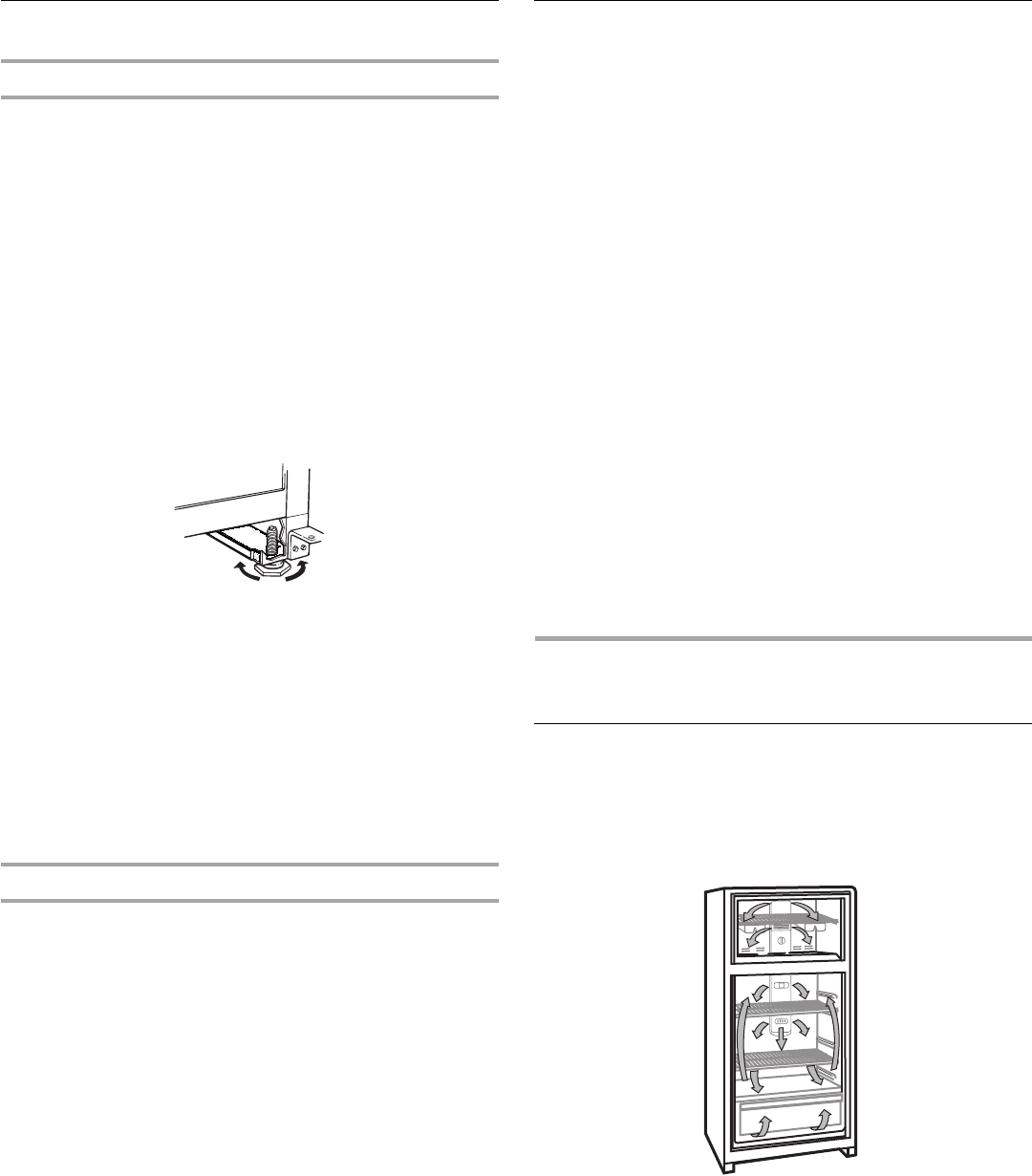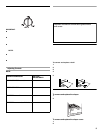
8
Door Closing and Alignment
Door Closing
NOTE: There are 4 bolts that secured the refrigerator in the
shipping case. These are the leveling legs.
If your refrigerator seems unsteady to you or you want the doors
to close more easily, adjust the refrigerator’s tilt using these
instructions.
1. Screw the leveling legs all the way into the bolt holes in the
bottom corners of the refrigerator.
2. Plug refrigerator power cord into a 3-prong grounded outlet.
Move the refrigerator into its final position.
3. Lower the leveling legs just enough to lift the cabinet from off
the floor.
4. Adjust the legs to level the refrigerator:
■ Turn the leveling leg to the right to lower that side of the
refrigerator.
■ Turn the leveling leg to the left to raise that side of the
refrigerator.
5. Check with a level.
6. Open and close both doors to make sure they swing properly.
If the doors do not close on their own, you will need to raise
the front of the refrigerator so it is slightly higher than the
back. To do this, turn the front leveling screws clockwise ¹⁄₂
turn.
IMPORTANT: Be sure to turn both legs an equal amount or
the refrigerator will no longer be level side to side.
7. Open the doors and check if they close automatically. If not,
repeat steps 5 and 6.
8. Using a level, check to see whether the refrigerator is still
level side to side. Readjust if necessary.
Door Alignment
If the space between your doors looks uneven, you can adjust it
using the instructions below:
1. Pry off the top hinge cover.
2. Loosen the top hinge screws using a ⁵⁄₁₆ in. socket or wrench.
3. Have someone hold the door in place or put a spacer
between the doors while you tighten the top hinge screws.
4. Replace the top hinge cover.
Normal Sounds
Your new refrigerator may make sounds that your old one didn’t
make. Because the sounds are new to you, you might be
concerned about them. Most of the new sounds are normal. Hard
surfaces, such as the floor, walls, and cabinets, can make the
sounds seem louder. The following describes the kinds of sounds
and what may be making them.
■ Your refrigerator is designed to run more efficiently to keep
your food items at the desired temperatures and to minimize
energy usage. The high efficiency compressor and fans may
cause your refrigerator to run longer than your old one. You
may also hear a pulsating or high-pitched sound from the
compressor or fans adjusting to optimize performance.
■ You may hear the evaporator fan motor circulating air through
the refrigerator compartment. The fan speed may increase as
you open the doors or add warm food.
■ Rattling noises may come from the flow of refrigerant or items
stored on top of the refrigerator.
■ As each cycle ends, you may hear a gurgling sound due to
the refrigerant flowing in your refrigerator.
■ You may hear air being forced over the condenser by the
condenser fan.
■ You may hear water running into the drain pan during the
defrost cycle.
■ You may hear clicking sounds when the refrigerator starts or
stops running.
■ The defrost timer may click when the defrost cycle starts.
REFRIGERATOR USE
Ensuring Proper Air Circulation
In order to ensure proper temperatures, you need to permit
airflow between the refrigerator and freezer sections. As shown in
the illustration, cool air enters through the bottom of the freezer
section and moves through the multiflow tower into the
refrigerator.
Do not block any of these vents with food packages. If the vents
are blocked, airflow will be prevented and temperature and
moisture problems may occur.
IMPORTANT: Because air circulates between both sections, any
odors formed in one section will transfer to the other. You must
thoroughly clean both sections to eliminate odors. To prevent
odor transfer and drying out of food, wrap or cover foods tightly.


















